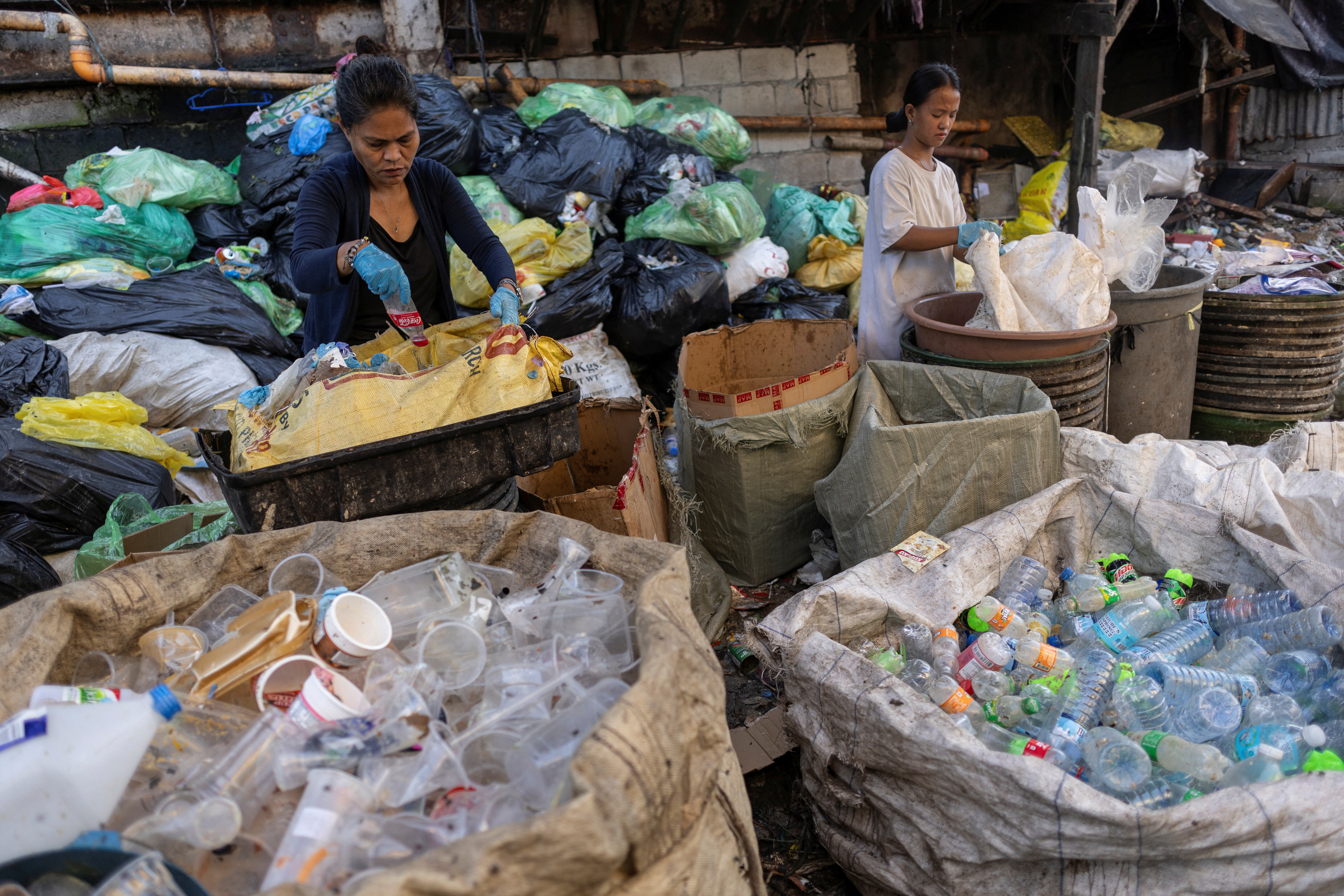What is the circular economy, and why does it matter that it is shrinking?

Circular economy: Reusing products can contribute to reducing our CO2 emissions. Image: Unsplash/Josh Power
Listen to the article
This article was updated on 10 March 2023 and 27 October 2022. It was first published on 14 June 2022.
- In a circular economy, products are used again and again, which reduces our use of precious raw materials and cuts CO2 emissions.
- However, the amount of secondary materials being cycled back into the global economy has shrunk in the past five years, a new report says.
- The Circularity Gap Report highlights four key circular economy principles that we need to follow to get things back on track.
- Circular economy initiatives are also helping, including the Circulars Accelerator, an innovation programme run in collaboration with the World Economic Forum.
The way we live now is using 60% more resources than the Earth can provide – and creating too much waste, according to experts.
Switching to a circular economy is widely considered to be the way forward.
What is the circular economy?
In a circular economy, things are made and consumed in a way that minimizes our use of the world’s resources, cuts waste and reduces carbon emissions. Products are kept in use for as long as possible, through repairing, recycling and redesign – so they can be used again and again.
At the end of a product’s life, the materials used to make it are kept in the economy and reused wherever possible, the European Parliament explains.
Why is the circular economy important?
The circular economy is an alternative to traditional linear economies, where we take resources, make things, consume them and throw them away. This way of living uses up finite raw materials and produces vast quantities of waste.
For example, the European Union produces more than 2.5 billion tonnes of waste a year.
Extracting and processing raw materials impacts the environment and increases energy consumption and CO2 emissions.
A circular economy could unlock $4.5 trillion of value by 2030, a report by Accenture estimates.
What changes could make the world more ‘circular’?
A more circular world would require system change. Consumers, businesses and politicians all need to make changes to how goods are designed, produced, sold, manufactured and reused. Some shifts could include:
- Design: A circular economy will require designing products so they can be easily recycled or disassembled (for repair, reuse or resource recovery). This could mean designing consumer products with fewer raw materials or capital equipment designed for serviceability, modularity, and refurbishment. For instance, mobile phone maker Fairphone developed the world's first smart phone built with circularity and supply chains in mind, creating an Android phone with a modular design that's easy to repair and purchase spare parts for.
- Business models: Product-as-a-service (where a provider retains the ownership of a product and the customer purchases access to it), sharing economy (where assets are shared across many owners) and others show alternative approaches to business that embed sustainability into way business is conducted.
- New metrics and shared data: Better data on availability of materials used for hard to abate industries such as construction can help slash emissions and protect biodiversity with reuse. For instance, the Netherlands Department for Public Works together with Rotterdam and Amsterdam, developed a national bruggenbank, or National Bridge Bank that serves as a marketplace for soon-to-be dismounted bridges and materials to maximise their reuse.
Better data will also be critical as there's currently no standardized set of metrics to track progress on things such as reuse, something vital to tackling plastic pollution or protecting vital resources. To this end, World Economic Forum’s Consumers Beyond Waste (CBW) initiative is helping to develop a set of standardized metrics, a key step in speeding the shift to reuse models. - Policy. Creating incentives for businesses and communities to build more circular habits is key to triggering long-term change. France, for instance, passed a law phasing out single-use plastic packaging by 2040 that has set other objectives reduction, reuse, and recycling. In September 2022, the residents of Zurich voted to include the circular economy in the canton's constitution. Additionally, the European Union recently released the Packaging and Packaging Waste Regulation (PPWR), putting forth reuse targets across select industry sectors.
Is recycling part of the circular economy?
Recycling involves converting waste materials into new materials and objects. This process itself uses energy and creates emissions, so can still contribute to global warming.
In an ideal circular economy, products are redesigned so they last through several life cycles – rather than being immediately recycled.
This can include refurbishing and redistributing products.
What is the state of global circularity?
According to The Circularity Gap Report, published February 2023, the amount of secondary materials being cycled back into the global economy has shrunk from 9.1% of total material inputs in 2018 to 7.2% in 2023.
"This isn’t simply because we’re failing to cycle more," it says. "It’s also due to increasing virgin extraction and the fact that we are putting more and more materials into stocks like roads, homes and durable goods."
Total material extraction has more than tripled since 1970 and almost doubled since 2000, putting it at 100 billion tonnes per year, the report says. It estimates that a circular economy could cut global material extraction by a third – and it is sorely needed, with the world having breached five of nine "planetary boundaries" that measure environmental health.
The waste of raw materials won't just disrupt lifestyles (It's estimated that 6 of the key elements for mobile phones will run out in the next century). It can slow our progress towards other, bigger goals. (Many materials lost to landfills as e-waste today will be key to the energy transition.)
Continuing on this path could lead to "total breakdown of Earth’s life support systems, which are already at a breaking point", the report says.
How can innovation fuel the circular economy?
There are a growing number of circular economy initiatives and technologies already under way.
Examples include the Circulars Accelerator, a six-month programme run by UpLink, the World Economic Forum’s innovation crowdsourcing platform, to help circular economy innovators scale their ideas. In 2022, 17 start-ups are taking part in the programme.
They include Aquacycl, an American company that generates electricity from untreatable waste water; Done Properly, a company in Chile developing sustainable food ingredients and Green Mining, a company in Brazil that recycles consumer packaging.
Innovation is key to progress. Research from Forum initiative Scale360° and ScaleUpNation found that startups that look to build ideas that scale while tackling system change can have an outsized impact on entire industries, accelerating work toward the United Nations Sustainable Development Goals, triggering change that would not be possible through classic commercial strategies.
The Circularity Gap Report says there are four key circular economy principles that we need to follow to achieve a 33% reduction in material extraction and consumption – use less, use longer, use again and make clean. It calls for increased public-private collaboration to make this vision a reality, and points out the ultimate reason why things need to change: "By upgrading to a model that maximizes the value that we extract from our precious materials, we can better ensure the well-being of present and future generations, while respecting the boundaries of our planet."
UpLink, the World Economic Forum’s early-stage innovation initiative, is enabling and accelerating the purpose-driven entrepreneurs that are essential for a net-zero, nature-positive, and equitable future. To find out more and join the UpLink community, click here.
What is the World Economic Forum doing about the circular economy?
Have you read?
Here's how we can double the size of the circular economy in ten years
Why the circular economy is the business opportunity of our time
5 reasons to shift from a ‘throw-it-away’ consumption model to a ‘circular economy’
21 circular economy solutions: changing how we eat, live and travel for a more sustainable world
The Circulars Accelerator 2023: Meet the 16 startups accelerating the transition to a circular economy
Don't miss any update on this topic
Create a free account and access your personalized content collection with our latest publications and analyses.
License and Republishing
World Economic Forum articles may be republished in accordance with the Creative Commons Attribution-NonCommercial-NoDerivatives 4.0 International Public License, and in accordance with our Terms of Use.
The views expressed in this article are those of the author alone and not the World Economic Forum.
Stay up to date:
UpLink
Related topics:
Forum Stories newsletter
Bringing you weekly curated insights and analysis on the global issues that matter.
More on Circular EconomySee all
Felipe Basso
November 13, 2025










